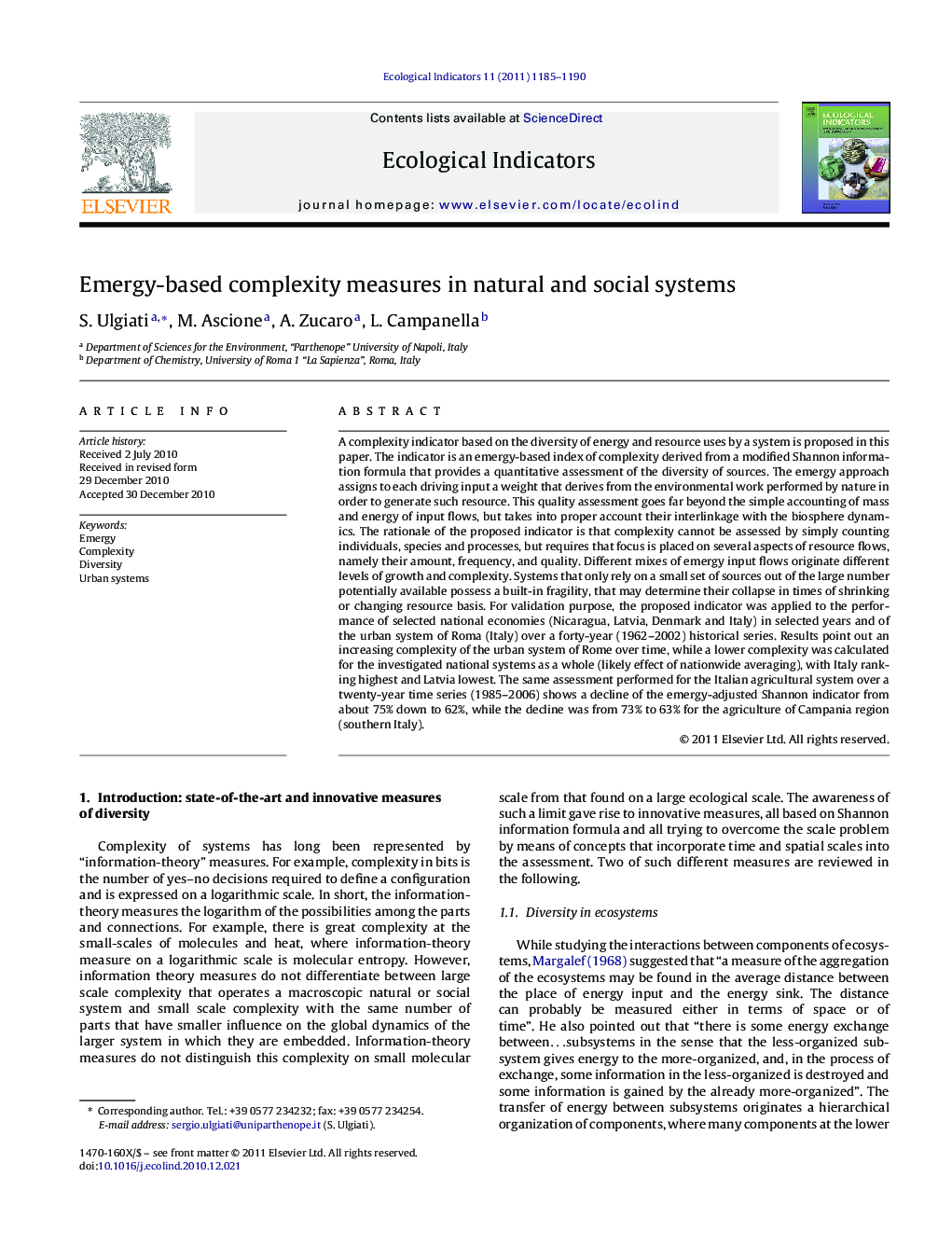| Article ID | Journal | Published Year | Pages | File Type |
|---|---|---|---|---|
| 4374054 | Ecological Indicators | 2011 | 6 Pages |
A complexity indicator based on the diversity of energy and resource uses by a system is proposed in this paper. The indicator is an emergy-based index of complexity derived from a modified Shannon information formula that provides a quantitative assessment of the diversity of sources. The emergy approach assigns to each driving input a weight that derives from the environmental work performed by nature in order to generate such resource. This quality assessment goes far beyond the simple accounting of mass and energy of input flows, but takes into proper account their interlinkage with the biosphere dynamics. The rationale of the proposed indicator is that complexity cannot be assessed by simply counting individuals, species and processes, but requires that focus is placed on several aspects of resource flows, namely their amount, frequency, and quality. Different mixes of emergy input flows originate different levels of growth and complexity. Systems that only rely on a small set of sources out of the large number potentially available possess a built-in fragility, that may determine their collapse in times of shrinking or changing resource basis. For validation purpose, the proposed indicator was applied to the performance of selected national economies (Nicaragua, Latvia, Denmark and Italy) in selected years and of the urban system of Roma (Italy) over a forty-year (1962–2002) historical series. Results point out an increasing complexity of the urban system of Rome over time, while a lower complexity was calculated for the investigated national systems as a whole (likely effect of nationwide averaging), with Italy ranking highest and Latvia lowest. The same assessment performed for the Italian agricultural system over a twenty-year time series (1985–2006) shows a decline of the emergy-adjusted Shannon indicator from about 75% down to 62%, while the decline was from 73% to 63% for the agriculture of Campania region (southern Italy).
